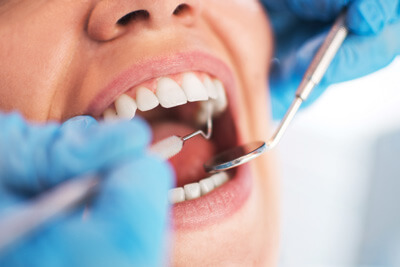
Crowns & Bridges in Burwood
Crowns are artificial teeth manufactured to replace damaged or missing teeth, or placed over a dental implant. Often referred to as “caps” they help restore and maintain the size, shape, appearance, and strength of your tooth.
Bridges are used when several missing teeth need to be replaced. Crowns are used to anchor the bridge, one on either end of the appliance that rests around the gums where there is tooth loss. These tooth coverings may be fused to existing teeth.
Crowns and bridges are prosthetic appliances usually made of porcelain or ceramic. These materials have a good texture, and provide excellent tooth-coloured aesthetics.
At Burwood Dental Centre, our state-of-the-art technology gives you the best options for restoring the lost function and shape of your teeth. Our dentists provide skilled, effective, and quality dental care. We offer flexible care plans and ensure you’ll receive natural-looking teeth with long-lasting results.
What to Expect
This procedure usually takes two visits. During the first appointment, your dentist usually starts by selecting an appropriate shade for your crown, using various shade guides, and considering your personal preferences. The dentist then prepares your tooth under local anaesthesia. This involves drilling the tooth surface, setting the foundation to receive the crown or bridge prosthesis.
Moulds of your prepared teeth are made using special trays and sent to the laboratory for production. Temporary replacements are placed while you await your new appliances. At your second visit, the dentist will fit the crowns onto your teeth and secure them in position with dental cements.

Care and Maintenance
Once your new crown or bridge is fitted, it’s important to maintain a regular and effective routine of oral hygiene. Brush and floss two to three times a day, taking extra care to floss around the cap to help avoid decay where the crown and the tooth join. Avoid sticky foods such as toffee and lollies, and do not use your teeth inappropriately—chewing pens, crunching ice, gnawing fingernails, etc.
A dental floss threader, which looks like a small bendy brush, may be used to clean under your fixed dental restoration. There are also water jets on the market that will help keep your bridge clean.
Regardless of which appliance you receive, the most important thing is to regularly visit your dentist for a check-up and clean. This allows problems to be detected and corrected early, before they become painful and expensive.
Frequently Asked Questions
How Long Does the Restoration Last?
Find Out More
Contact our practice for more information. Call today.
CONTACT US
Any invasive or surgical procedure may carry risks. Before moving forward, it is recommended that you seek a second opinion from an appropriately licensed medical professional.

